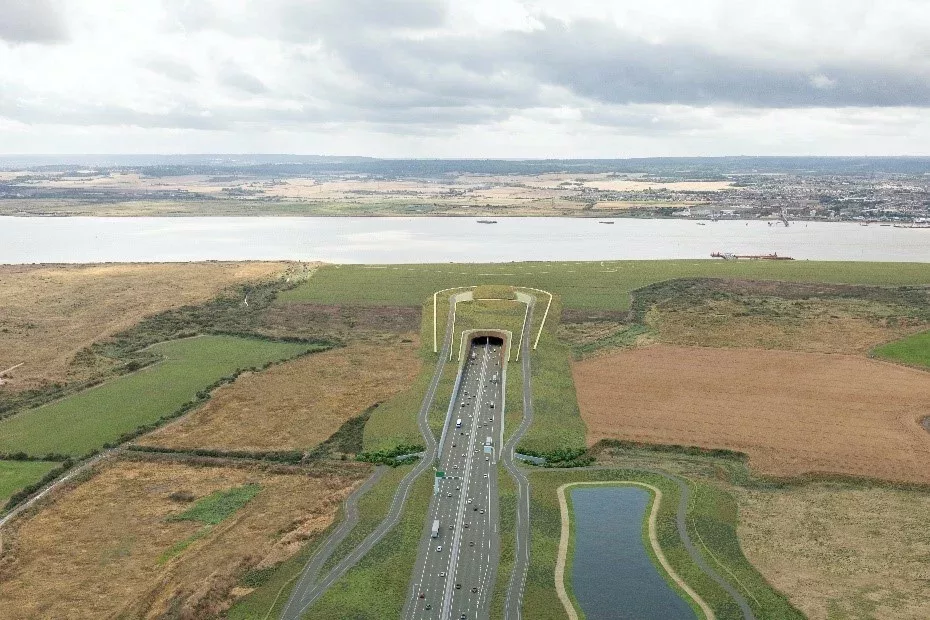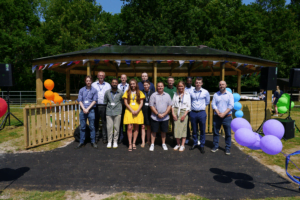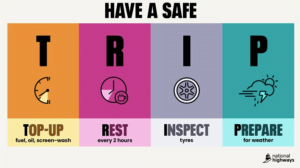National Highways has designated the Lower Thames Crossing a ‘pathfinder’ project that will explore carbon-neutral construction as part of its efforts to make the new crossing the greenest road ever built in the UK.
The proposed Lower Thames Crossing will almost double road capacity across the Thames east of London, and as a pathfinder project, the project team will work with a broad range of partners from major engineering companies to small businesses and universities, to identify, test and scale-up innovative ways of building and maintaining low carbon infrastructure.
New ideas being considered include removing diesel from its sites by only using hydrogen and electric plant, and looking at alternatives to carbon-intensive materials such as concrete and steel, after which the project will also consider carbon offsetting to address any residual emissions These plans will be shared with the supply chain and wider industry so they can be used on this or any other infrastructure project, meaning the project could be a catalyst for change across the industry.
National Highways says the project has already reduced its predicted emissions during construction by over a third by carefully designing its route and structures, and planning to use zero carbon energy sources, reduce and beneficially reusing waste, and make use of existing low-carbon materials. Through its procurement process, the project will develop an even more ambitious carbon baseline that will stimulate innovation throughout the supply chain by incentivising continual carbon reduction. The move will see the Lower Thames Crossing become the first major infrastructure project in the UK to put carbon [reduction] at the heart of its procurement.
The project’s procurement process will move to the next stage next month as the shortlisted bidders for the Roads North of the Thames and Kent Roads contracts worth a combined £1.9 billion will be invited to tender. The procurement for the £2.3 billion Tunnels and Approaches contract will progress later in the year.
The announcement, at the ‘Road to Net Zero Construction’ event held in partnership with the Thames Estuary Growth Board, is made alongside firms bidding to build the project set out their commitment to support National Highways’ low carbon goals, and speak to over 170 local businesses about the role they might play.
Roads Minister Baroness Vere said: “Exploring carbon neutral construction is crucial to our efforts to decarbonise our transport network and Build Back Greener from the pandemic.
“I hope this groundbreaking proposal will pave the way for other innovative, green solutions to roadbuilding in the future.”
Matt Palmer, Executive Director for the Lower Thames Crossing said: “Our roads play a critical role in keeping people and the country’s economy moving, now and long into our low-carbon future. We want to make the Lower Thames Crossing the greenest road ever built in the UK, and as a pathfinder project we will push the boundaries in construction and show how we and other large infrastructure projects can help the UK reach net zero.
“But we can’t do it alone. We have an ambitious partner in the Thames Estuary Growth Board, and we’re delighted that over 500 local business have already signed up to our SME directory and registered their interest in supporting the project; it’s an incredibly exciting opportunity to develop low carbon innovations that can help them be at the forefront of a new green economy in the region.”
Kate Willard OBE, Estuary Envoy and Chair of the Thames Estuary Growth Board said: “The ambitions of the Lower Thames Crossing team echo our own. Just as they aspire to create the greenest road ever built in the UK, we are striving towards creating the world’s greenest Estuary. That is why we partner with and support brilliant projects like these that take an innovative approach to sustainability. This project paves the way for transport infrastructure progress in the UK.
“Everything we do has the people of the Thames Estuary at its heart: our Green Blue Workplan sets out our key steps to helping level up the region and deliver clean, sustainable growth that works with the environment, never against it. The Lower Thames Crossing has the potential to help improve the lives of millions of people, by creating jobs, protecting wildlife and opening up areas of landscape. We fully support it and invite local businesses across the Thames Estuary to get involved, and join our charge towards a new, greener economy.”
National Highways says it is designing the Lower Thames Crossing to be the greenest road ever built in the UK, with its ambitious carbon reduction targets matched by plans to enhance biodiversity, build new parks and woodland, and promote active travel. The proposals include; the longest road tunnel in the UK to protect the Thames and nearby wetlands; seven green bridges will provide safe crossing points for people and wildlife; two new public parks and a new community woodland; and more than 60km of new or upgraded pathways for walkers, cyclists and horse riders.
National Highways plans to submit an application for a Development Consent Order for the new crossing later this year, once it has held a further round of consultation on revised plans near the river in Thurrock to support the Thames Freeport, and a handful of refinements following feedback from the local community and stakeholders. The project’s procurement is continuing in parallel to the consent to enable construction to begin quickly, should permission be granted.
(Picture – National Highways)





















